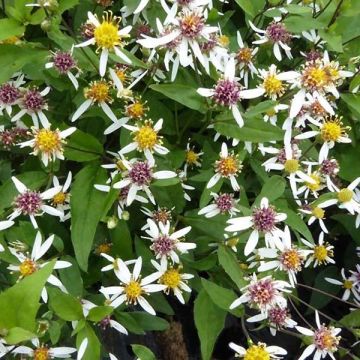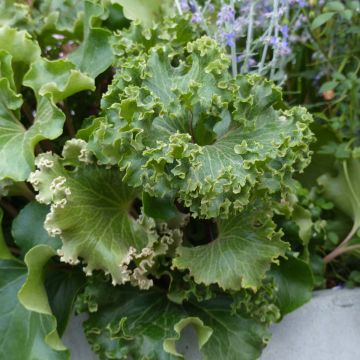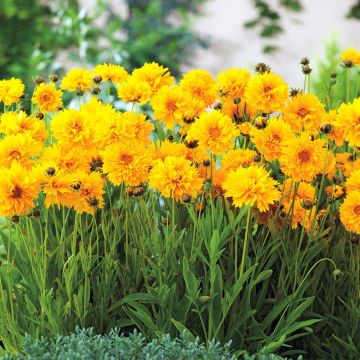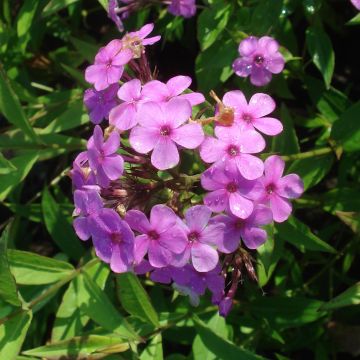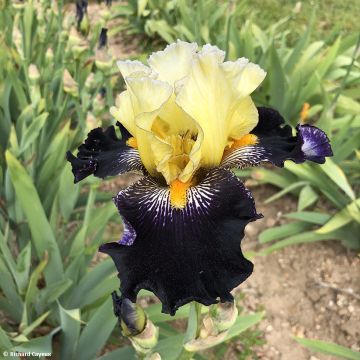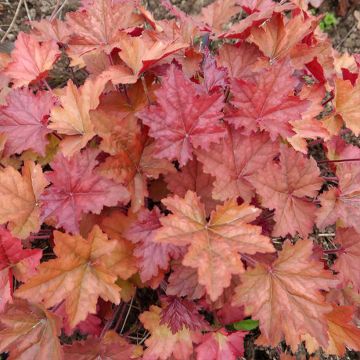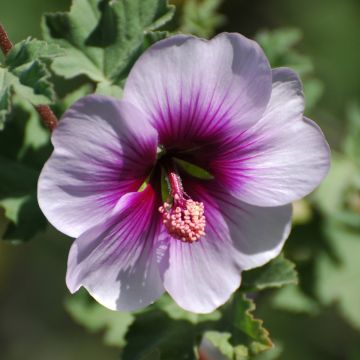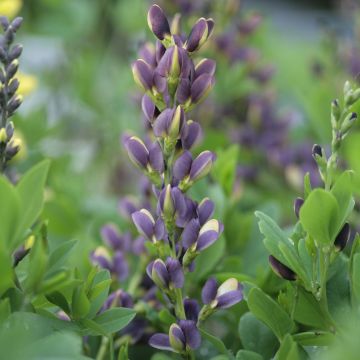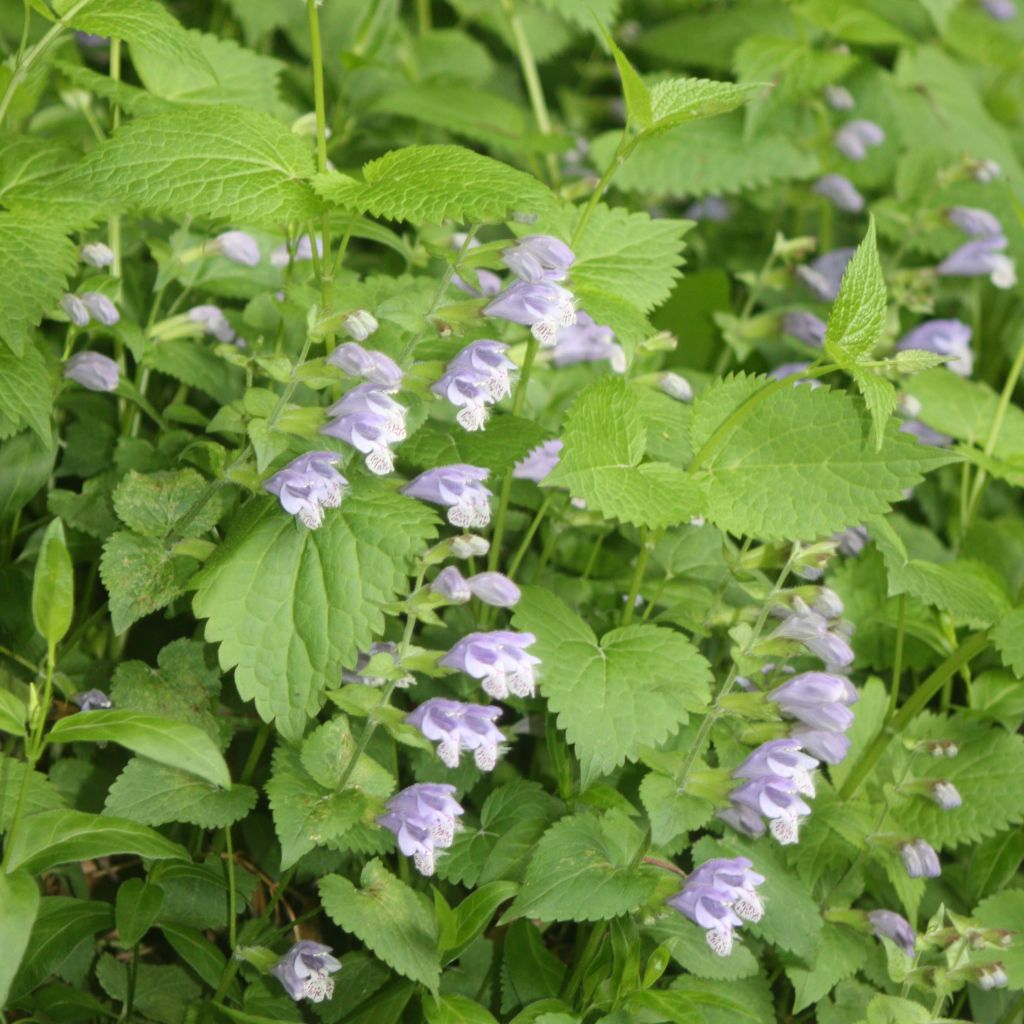

Meehania urticifolia
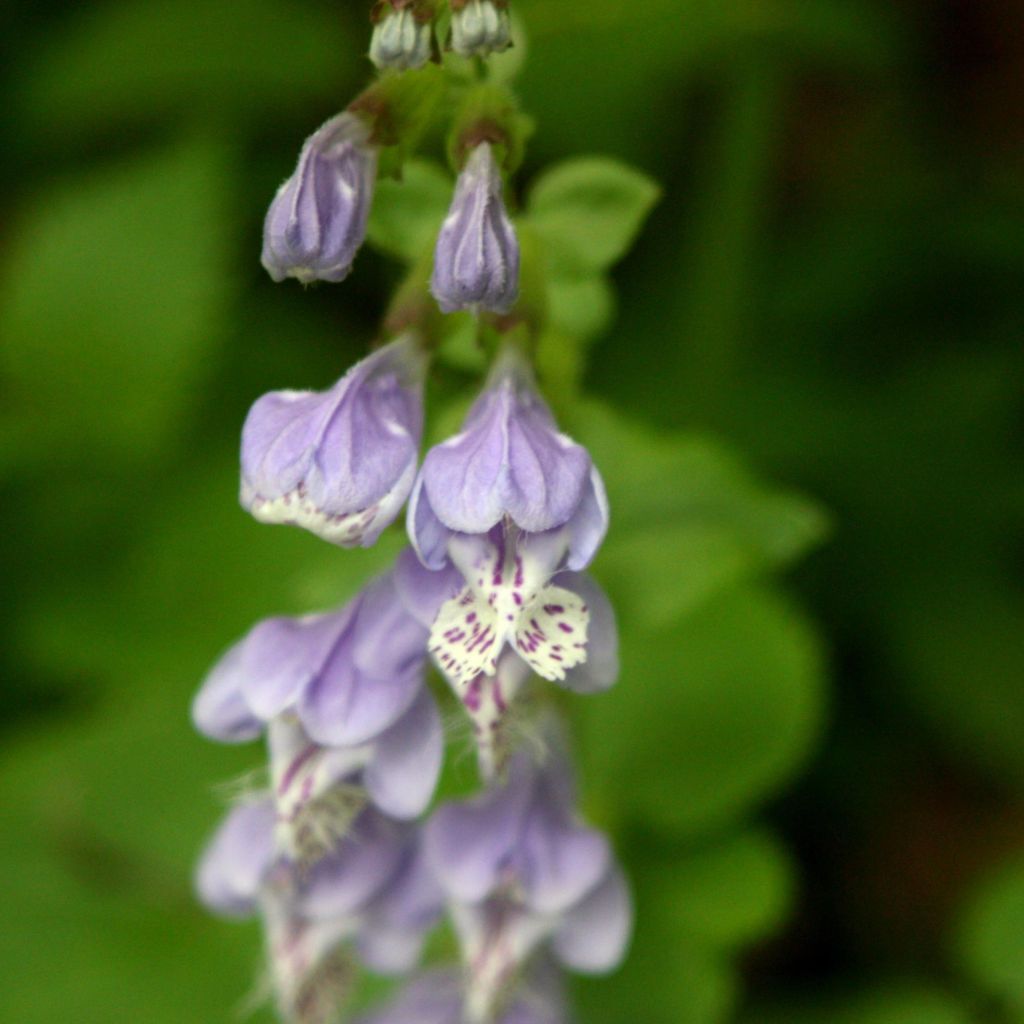

Meehania urticifolia
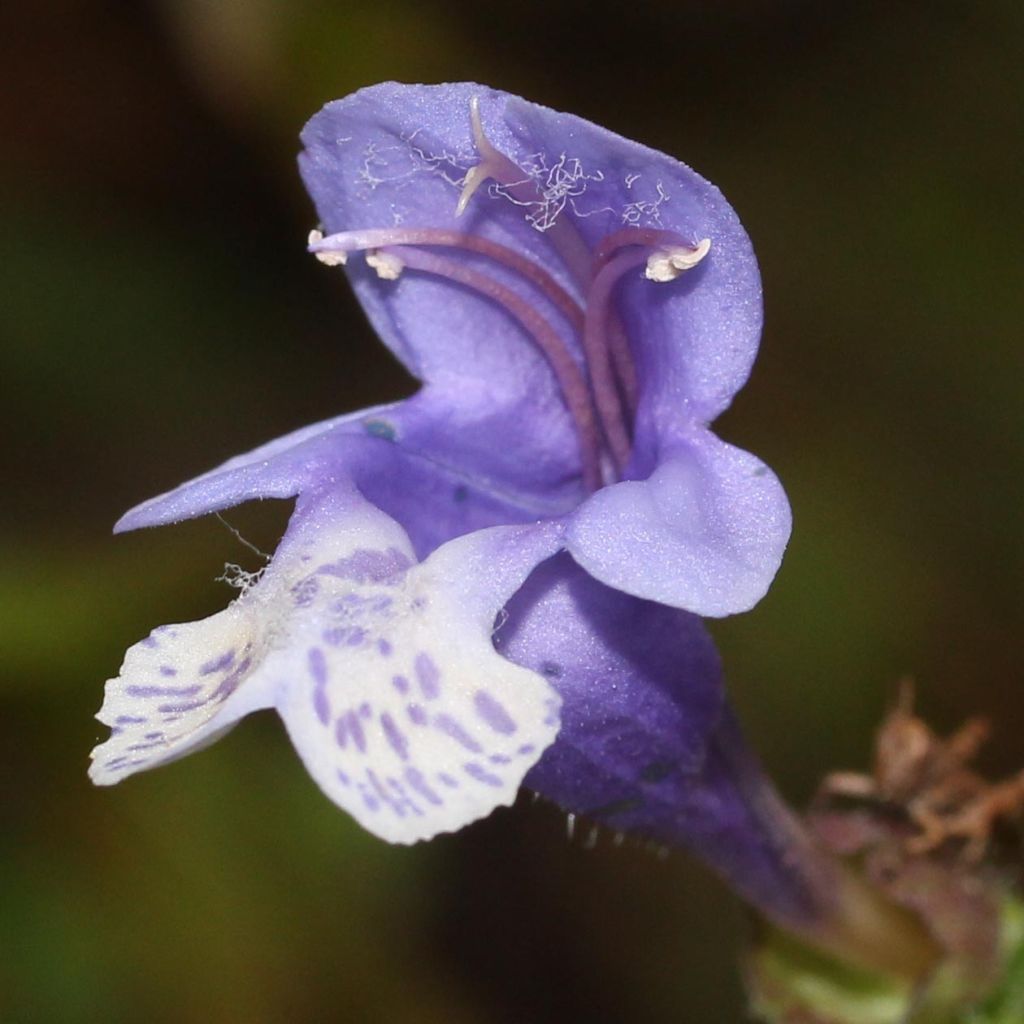

Meehania urticifolia
Meehania urticifolia
Meehania urticifolia
Meehan Mint
flower arrived wilted
denise, 19/08/2021
This item cannot be shipped to the selected country
Delivery charge from €5.90
More information
Schedule delivery date,
and select date in basket
This plant carries a 12 months recovery warranty
More information
We guarantee the quality of our plants for a full growing cycle, and will replace at our expense any plant that fails to recover under normal climatic and planting conditions.
From €5.90 for pickup delivery and €6.90 for home delivery
Express home delivery from €8.90.
Does this plant fit my garden?
Set up your Plantfit profile →
Description
Meehania urticifolia, formerly known as Cedronella urticifolia, Dracocephalum sinense, or Dracocephalum urticifolium, is a vigorous little perennial stoloniferous plant related to deadnettles that quickly forms a beautiful ground cover. It forms a thick carpet of leaves that persists if the winter is not too harsh, coming to life in spring with an abundance of pleasantly scented purple flowers. This hardy and undemanding plant can be used like ivy, in all shaded or semi-shaded areas of the garden. It is stunning along a pathway, in a moist rockery, or at the edge of woodland.
Meehania urticifolia belongs to the Lamiaceae family, just like mint, sage, and deadnettles. It is a perennial and hardy species native to high-altitude forests in China, Japan, Korea, and eastern Russia. The plant develops stoloniferous stems, which root at ground level, as well as upright stems that bear leaves. It grows quite rapidly, reaching about 15 to 20cm (6 to 8in) in height and spreads without a theoretical limit. The foliage is evergreen unless the winter is severe. It is composed of small heart-shaped, toothed, and hairy leaves, of a fairly light green colour. Flowering takes place in May-June. Short upright flower stalks emerge from the leaf axils, each carrying 3 to 12 4cm (2in) two-lipped, blue-lavender flowers, punctuated and streaked with mauve, in upright spikes. They emit a delicate fragrance and are popular with pollinating insects.
Meehania urticifolia prefers moist to wet soils, but it can tolerate moderate summer drought, especially if planted away from direct sunlight. It makes a charming ground cover along a pathway, on a bank, in a slightly damp rockery, or under flowering shrubs. It requires little maintenance. To accompany it, consider, for example, other shade perennials such as epimediums, corydalis, Lamium galeobdolon (that it resembles), macrorrhizum geraniums, Tiarella cordifolia, and Tellima grandiflora.
Report an error about the product description
Meehania urticifolia in pictures
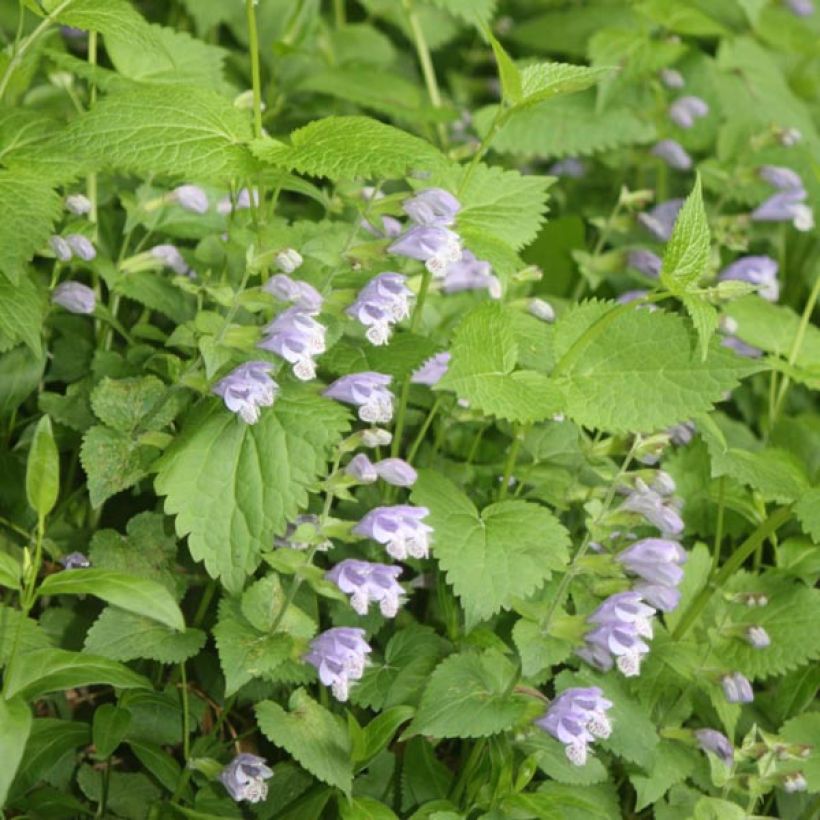

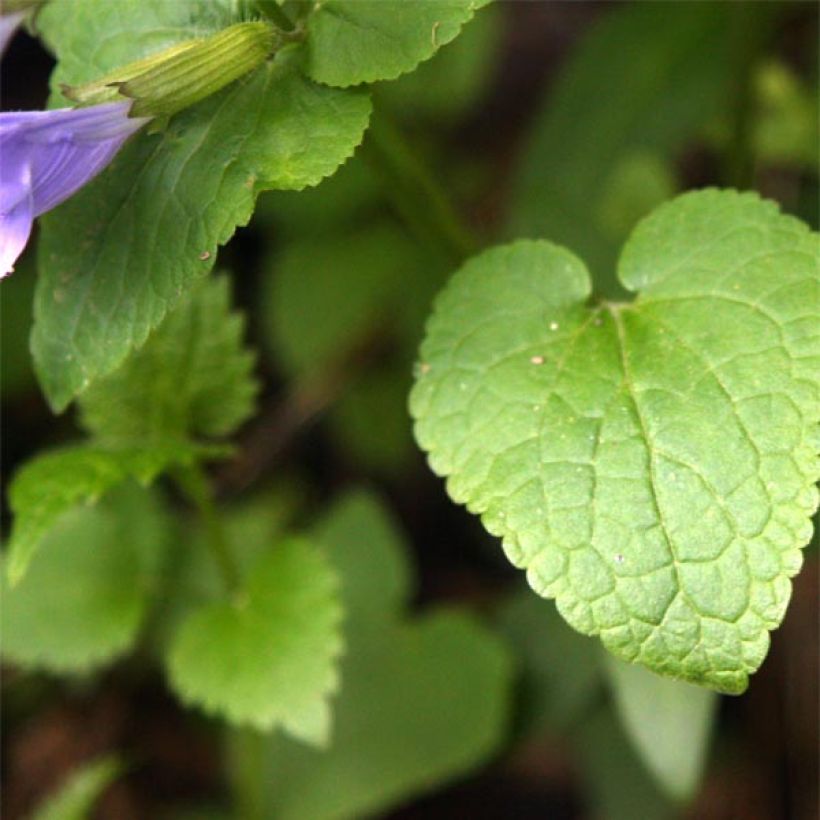

Flowering
Foliage
Plant habit
Botanical data
Meehania
urticifolia
Lamiaceae
Meehan Mint
China
Other Perennials A to Z
Planting and care
Meehania urticifolia is an excellent ground cover for a semi-shaded garden. Although it prefers moist soil, it tolerates summer drought in the shade. Plant it in well-drained, light, ordinary soil enriched with compost. It retains its foliage in winter and only loses it in extreme cold. It is a robust and hardy plant that has few enemies. However, protect it from slugs that love its young leaves.
Planting period
Intended location
Care
-
, onOrder confirmed
Reply from on Promesse de fleurs
Haven't found what you were looking for?
Hardiness is the lowest winter temperature a plant can endure without suffering serious damage or even dying. However, hardiness is affected by location (a sheltered area, such as a patio), protection (winter cover) and soil type (hardiness is improved by well-drained soil).

Photo Sharing Terms & Conditions
In order to encourage gardeners to interact and share their experiences, Promesse de fleurs offers various media enabling content to be uploaded onto its Site - in particular via the ‘Photo sharing’ module.
The User agrees to refrain from:
- Posting any content that is illegal, prejudicial, insulting, racist, inciteful to hatred, revisionist, contrary to public decency, that infringes on privacy or on the privacy rights of third parties, in particular the publicity rights of persons and goods, intellectual property rights, or the right to privacy.
- Submitting content on behalf of a third party;
- Impersonate the identity of a third party and/or publish any personal information about a third party;
In general, the User undertakes to refrain from any unethical behaviour.
All Content (in particular text, comments, files, images, photos, videos, creative works, etc.), which may be subject to property or intellectual property rights, image or other private rights, shall remain the property of the User, subject to the limited rights granted by the terms of the licence granted by Promesse de fleurs as stated below. Users are at liberty to publish or not to publish such Content on the Site, notably via the ‘Photo Sharing’ facility, and accept that this Content shall be made public and freely accessible, notably on the Internet.
Users further acknowledge, undertake to have ,and guarantee that they hold all necessary rights and permissions to publish such material on the Site, in particular with regard to the legislation in force pertaining to any privacy, property, intellectual property, image, or contractual rights, or rights of any other nature. By publishing such Content on the Site, Users acknowledge accepting full liability as publishers of the Content within the meaning of the law, and grant Promesse de fleurs, free of charge, an inclusive, worldwide licence for the said Content for the entire duration of its publication, including all reproduction, representation, up/downloading, displaying, performing, transmission, and storage rights.
Users also grant permission for their name to be linked to the Content and accept that this link may not always be made available.
By engaging in posting material, Users consent to their Content becoming automatically accessible on the Internet, in particular on other sites and/or blogs and/or web pages of the Promesse de fleurs site, including in particular social pages and the Promesse de fleurs catalogue.
Users may secure the removal of entrusted content free of charge by issuing a simple request via our contact form.
The flowering period indicated on our website applies to countries and regions located in USDA zone 8 (France, the United Kingdom, Ireland, the Netherlands, etc.)
It will vary according to where you live:
- In zones 9 to 10 (Italy, Spain, Greece, etc.), flowering will occur about 2 to 4 weeks earlier.
- In zones 6 to 7 (Germany, Poland, Slovenia, and lower mountainous regions), flowering will be delayed by 2 to 3 weeks.
- In zone 5 (Central Europe, Scandinavia), blooming will be delayed by 3 to 5 weeks.
In temperate climates, pruning of spring-flowering shrubs (forsythia, spireas, etc.) should be done just after flowering.
Pruning of summer-flowering shrubs (Indian Lilac, Perovskia, etc.) can be done in winter or spring.
In cold regions as well as with frost-sensitive plants, avoid pruning too early when severe frosts may still occur.
The planting period indicated on our website applies to countries and regions located in USDA zone 8 (France, United Kingdom, Ireland, Netherlands).
It will vary according to where you live:
- In Mediterranean zones (Marseille, Madrid, Milan, etc.), autumn and winter are the best planting periods.
- In continental zones (Strasbourg, Munich, Vienna, etc.), delay planting by 2 to 3 weeks in spring and bring it forward by 2 to 4 weeks in autumn.
- In mountainous regions (the Alps, Pyrenees, Carpathians, etc.), it is best to plant in late spring (May-June) or late summer (August-September).
The harvesting period indicated on our website applies to countries and regions in USDA zone 8 (France, England, Ireland, the Netherlands).
In colder areas (Scandinavia, Poland, Austria...) fruit and vegetable harvests are likely to be delayed by 3-4 weeks.
In warmer areas (Italy, Spain, Greece, etc.), harvesting will probably take place earlier, depending on weather conditions.
The sowing periods indicated on our website apply to countries and regions within USDA Zone 8 (France, UK, Ireland, Netherlands).
In colder areas (Scandinavia, Poland, Austria...), delay any outdoor sowing by 3-4 weeks, or sow under glass.
In warmer climes (Italy, Spain, Greece, etc.), bring outdoor sowing forward by a few weeks.

































